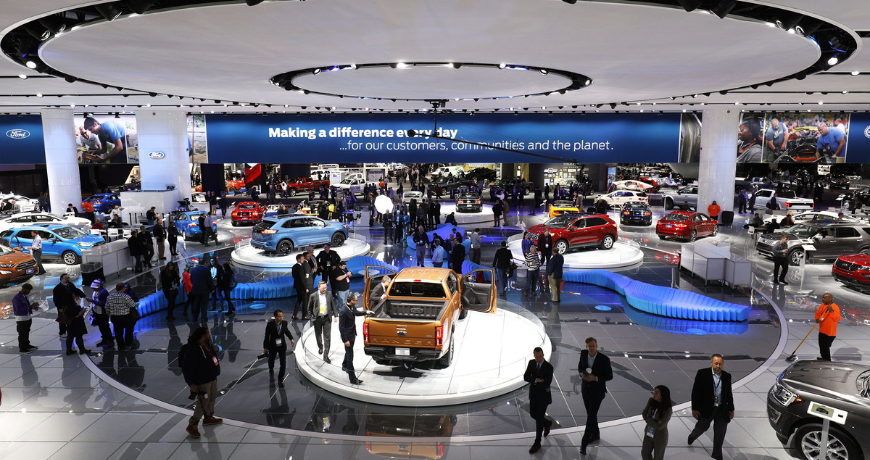The North American International Detroit Auto Show is set to make a grand return to its traditional January schedule in 2025, according to an announcement by the Detroit Auto Dealers Association (DADA). The esteemed event, which shifted to September in recent years, will now be held from January 10-20, reinstating its renowned winter timing.
Rod Alberts, the Executive Director of DADA, emphasized the significance of this move in a statement. “Our primary goal is to create an impactful auto show and showcase our great city and industry,” Alberts said. “After discussions with numerous partners, we believe a January date absolutely makes the most sense. In a constantly changing global automotive landscape, this update reflects our efforts to continue to reimagine the Detroit Auto Show with keeping an eye on what matters most — getting people excited about cars.”
The auto industry has recently navigated complex challenges, including the significant UAW Big Three strike last year. The strike brought unique dynamics to the industry, with various allegiances and tensions impacting both production and marketing aspects. The upcoming 2025 show is anticipated to mark a return to normalcy, where the industry’s focus can realign on innovation and consumer engagement without the backdrop of labor disputes.
The announcement also detailed the schedule for the show, with the annual Charity preview set for Friday, January 10, followed by public days running from January 11 to 20. However, the specifics regarding media and industry/technology days remain to be announced.
This strategic shift follows two years of summer shows, a temporary alteration due to the COVID-19 pandemic. According to Claude Molinari, President and CEO of the Detroit Metro Convention and Visitors Bureau, as reported by Crain’s, the most recent winter show took place in January 2019. Molinari, who also chairs the Detroit Regional Convention Facility Authority, welcomed the decision, noting, “The Detroit and Southeast Michigan hospitality community, we’re thrilled by this move to have an incredible show during a time of the year that has historically not been the best time to sell major meetings and conventions.”
The summer edition of the auto show, characterized by its indoor-outdoor hybrid model, aimed to revitalize an event that was losing traction due to competing shows and changing marketing strategies by automakers. Despite its unique attractions like hoverboards, dinosaurs, and a giant rubber duck, critics argued that these elements diverted attention from the primary focus – the cars. Last September, the show redirected its focus back to the automotive brands.
An $8 million state grant supported the show, featuring 35 brands across a 723,000-square-foot show floor. Alberts, in a conversation with Crain’s last summer, highlighted the grant’s role in strengthening Michigan’s position in the mobility and electrification sector.
As the automotive industry converges on Las Vegas for CES, a notable competitor, the decision to revert to a winter schedule for the Detroit show is seen as a strategic move. Molinari, in comments to Crain’s, articulated the benefits of this decision. “To have the Detroit International Auto Show back in January is going to be majorly positive for our restaurants and our hotels and our attractions,” he stated.
This reversion to the January slot not only signifies a return to tradition but also a strategic alignment with industry trends and consumer interests, potentially marking a new era for the Detroit Auto Show.

